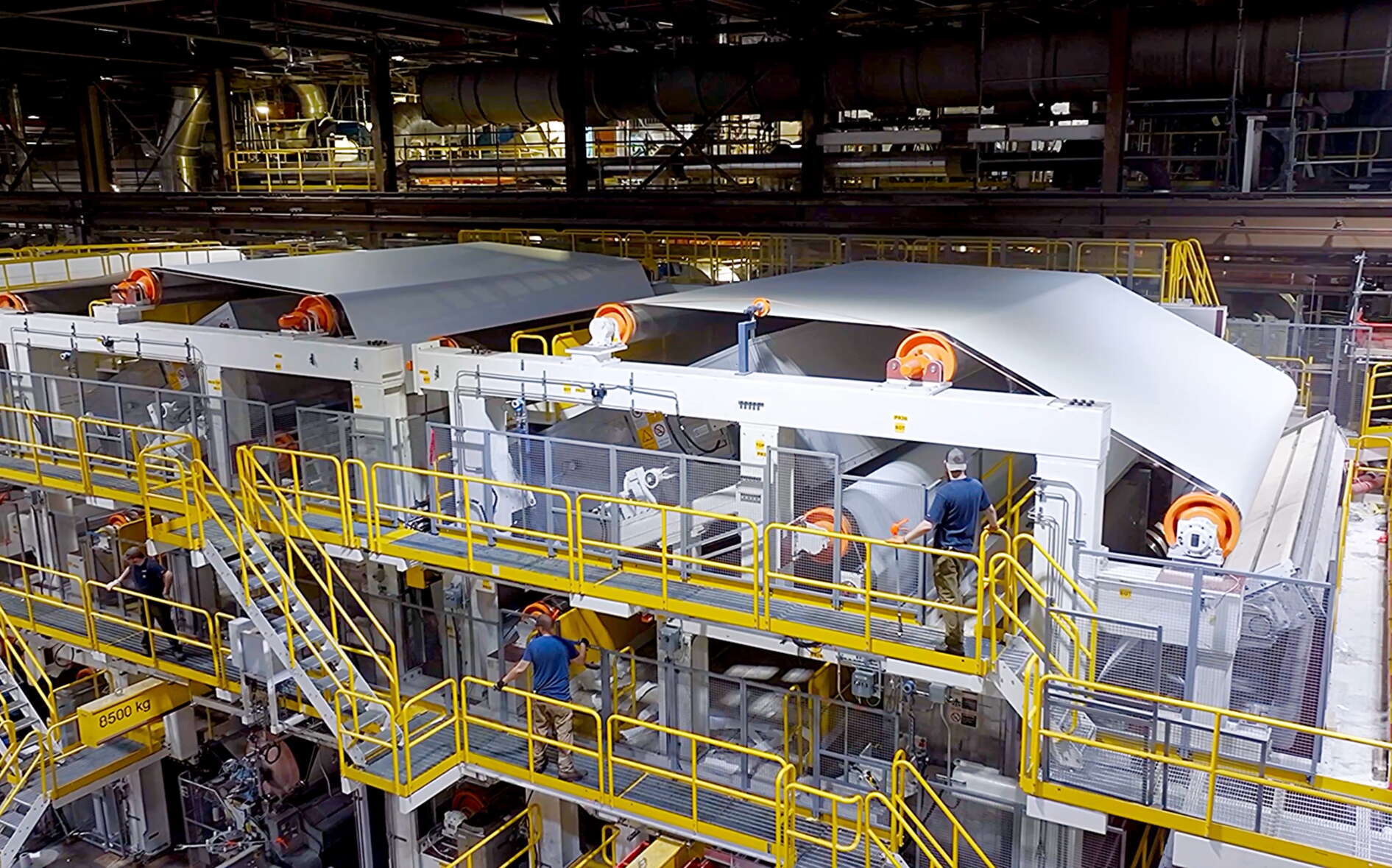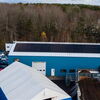
With pending sale of Kennebec River dams, Sappi urges caution about potential removal
 FILE PHOTO / MAUREEN MILLIKEN
The Nature Conservancy plans to buy Brookfield Renewable’s Lockwood Dam, foreground, Hydro Kennebec Dam, beyond the bridge, and two other dams.
FILE PHOTO / MAUREEN MILLIKEN
The Nature Conservancy plans to buy Brookfield Renewable’s Lockwood Dam, foreground, Hydro Kennebec Dam, beyond the bridge, and two other dams.
The Nature Conservancy and New York-based hydropower company Brookfield Renewable Partners (NYSE: BEP) signed a purchase and sale agreement for the Lockwood, Hydro-Kennebec, Shawmut and Weston dams on the lower Kennebec River between Waterville and Skowhegan.
The deal includes decommissioning or removal of the dams and related hydroelectric facilities to restore free-flowing conditions, according to a news release.
But the paper company Sappi North America urged caution on the deal, saying the removal of the Shawmut Dam poses a threat to the viability of Sappi’s Somerset Mill in Skowhegan, including the thousands of jobs connected to Sappi's operations through direct employment and independent loggers, contractors and landowners.
Sappi just finished a $500 million upgrade of the Somerset Mill in Skowhegan.
And the Professional Loggers Association of Maine said that if the deal harms Sappi, it could devastate the region's logging and forest trucking industry.
The deal
The purchase agreement was the result of a years-long discussion between the conservancy and Brookfield. As the buyer, the conservancy and its partners seek to return free-flowing conditions to the lower Kennebec River through a mix of dam decommissioning, removal and other efforts.
The decommissioning process will take multiple years. During that time, Brookfield has agreed to continue to maintain operations at each of the four facilities under long-term operating agreements and municipalities will continue to receive property tax payments.
The conservancy said it intends to work with riverside municipalities to manage the effects of the process.
The conservancy is a conservation organization working in 81 countries and territories, 40 by direct conservation impact and 41 through partners.
Brookfield is owned by Brookfield Asset Management, a global alternative asset manager with over $1 trillion of assets under management across infrastructure, renewable power and transition, private equity, real estate and credit.
DNB Carnegie is acting as financial advisor and Preti Flaherty is acting as legal advisor to Brookfield.
Long Life Capital Inc. is acting as strategic advisor and Orrick, Herrington & Sutcliffe LLP and Foley Hoag LLP are acting as legal advisors to the conservancy.
The river
Conservation groups have said the four dams owned by Brookfield threaten the survival of Atlantic salmon and cause harmful conditions for other sea-run fish species such as river herring.
The four dams are in Waterville-Winslow, Fairfield and Skowhegan.
The Kennebec is the state's second-largest watershed, and was once the most productive river in Maine for sea-run fish, with Atlantic salmon runs in the hundreds of thousands.
An independent, nonprofit organization, the Kennebec River Restoration Trust, is being formed to take ownership of the dams, oversee operations of the hydroelectric facilities and manage a multi-year restoration and redevelopment process in collaboration with local communities.
Its governing board, staff and advisory groups will represent a range of sectors and perspectives. In the coming months, information about the organization will be shared publicly.
Collaborating partners working with the conservancy include the Atlantic Salmon Federation, American Rivers, Bomazeen Land Trust, Houlton Band of Maliseet Indians, Main Street Skowhegan, Maine Rivers, Natural Resources Council of Maine, Penobscot Nation, Trout Unlimited, Conservation Law Foundation and the Conservation Fund.
“As this process advances, Brookfield remains committed to ensuring that Maine homes and businesses continue to benefit from reliable and clean hydropower on the Kennebec River and throughout the state,” said Stephen Gallagher, CEO of Brookfield Renewable N.A.
The paper mill
In a separate release, Sappi said the potential removal of the Shawmut Dam would jeopardize operations at its Somerset Mill, which depends on the impoundment or pond created by the dam for water intake and discharge operations.
As part of the $500 million investment at the Somerset Mill, Sappi says it created the most advanced machine of its kind in North America.

The investment positions the mill to produce renewable, fiber-based packaging as an alternative to plastic, the company said.
“For 50 years, the Somerset Mill has been a cornerstone of Maine’s manufacturing economy,” said Sean Wallace, Sappi North America’s vice president of research, development and sustainability. “We share the goal of protecting Maine’s rivers and believe there are solutions that will allow fisheries to thrive without putting thousands of good jobs at risk.”
Wallace said the company is looking to work with the conservancy, local communities, state and federal agencies and state legislators “to find a balanced path forward, including options that preserve the impoundment.”
'Potentially devastating'
Professional Logging Contractors of Maine also urged caution.
“While we need to allow time and discussions to play out, if Sappi is harmed, it will devastate our members and the entire logging and forest trucking industry in our region,” said Dana Doran, executive director of the PLC.
Doran continued, “Sappi’s Somerset Mill is the largest wood-consuming mill in Maine and has invested significantly in upgrades and innovations to assure it will remain an anchor of our forest economy for decades to come. Removal of the Shawmut Dam would threaten the mill’s viability. We urge the new owners of the dams to commit to, as they said in their statement, developing a solution with Sappi that not only fully addresses the Somerset Mill’s long-term water system needs, but ensures the livelihoods of hundreds of families tied to logging and trucking.”
In a separate statement, state Sen. Brad Farrin, R-Somerset, said a return to free-flowing conditions on the river “is potentially devastating for Sappi North America’s Somerset Mill and its thousands of workers.”
He added, “To my knowledge, there is no viable technical option to solve Sappi’s water quantity issue that would result from removal of the Shawmut Dam and its impoundment.”
Sappi NA’s facilities include a corporate office in Portland and mills in Skowhegan and Westbrook; Cloquet, Minn.; and Matane, Quebec. The company employs about 2,100 people in the U.S. and Canada, using wood fiber to create packaging, specialty papers, graphic papers and pulp.
Sappi NA is a subsidiary of Sappi Limited, headquartered in Johannesburg, South Africa, with more than 12,000 employees and manufacturing operations on three continents in seven countries and customers in over 150 countries.
Conservancy response
The conservancy said its partnership is committed to developing a solution with Sappi that addresses the Somerset Mill’s long-term water system needs.
“We understand the vital role of the Somerset Mill for the forest products industry and the state’s economy, and we believe it will be possible to protect the mill’s future and achieve river restoration goals on the lower Kennebec,” the conservancy said.
The conservancy noted that it has sourced paper from Sappi for over 20 years, printing over three million copies of its magazine annually on paper manufactured at the Somerset Mill.














0 Comments